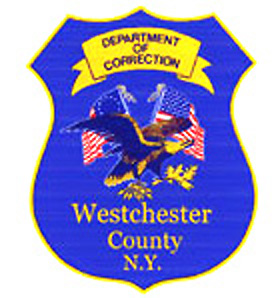
 | (#2 of 9 parts) |  |
The text and images are presented here by permission of the author and the Westchester County Historical Society that published them as the cover article, "A Proper Regard for the Unfortunates," in the Spring 2006 edition of its Westchester Historian. All rights retained and reserved. | ||
|
The practice of defining "jail limits" is now antiquated, but in the 18th and 19th centuries, it was common to define and mark off the territorial limits of a local jail to allow an imprisoned debtor to go at large under certain conditions.
The first known Court order defining "jail limits" in Westchester County was issued by the Court of Common Pleas on September 27, 1798 and specified "two acres three quarters and twenty rods of land" surrounding the old Court House on South Broadway in White Plains. [End note #4]
The "jail limits" of Westchester County were among the many changes that would need to be addressed with the proposed construction of the first jail facility.
In 1854, property owned by Charles A. Purdy in White Plains was offered to the County government for its building needs. The square block (now in downtown White Plains) was bounded by Railroad Avenue (now Main Street), Court Street, Martine Avenue, and Grand Street. The land was formally transferred to the Westchester County Board of Supervisors "for the use and benefit of the inhabitants of said County" on June 2, 1855 by Mr. Purdy for one dollar at the office of County Court Judge John W. Mills in White Plains. [End note #5]
At the closing session of its 1854 Annual Meeting on December 7th, the Westchester County Board of Supervisors established a building oversight committee to supervise construction of the new County government center in central White Plains, having formally proposed that the County Treasurer seek borrowing authority in an amount not to exceed $40,000 for construction.
The committee consisted of: Abraham Hatfield of the Town of Westchester (now eastern Bronx County), George C. Finch of the Town of North Salem, States Barton of the Town of New Rochelle, Daniel Hunt of the Town of Lewisboro, and William Marshall Jr. of the Town of Somm, who acted as secretary.
The Board had decided by a three-fourths vote (18 to 4) to build a new Court House that would house County government functions and to construct a separate jail facility.
Greenburgh Town Supervisor Daniel H. Little was authorized to travel to Albany to secure passage of borrowing authority for the County Treasurer from the State Legislature.
He later sought and received reimbursement in the amount of $13 to cover his travel and related expenses for this Albany trip.
In February 1855 - prior to any action by the N.Y. State Legislature - members of the Prison Association of New York visited the jail accommodations in Westchester County and found them to be deficient.
The Association was incorporated in 1846 for "the amelioration of the conditions of prisoners, whether detained for trial, or finally convicted, or as witnesses".[End note #8]
The group was granted extraordinary powers by the N.Y. State Legislature, which determined that: "...it shall be their duty to visit, inspect and examine all the prisons in the State, and annually report to the Legislature their state and condition." [End note #9]
These inspection powers were to be affirmed by a N.Y. State Supreme Court Judge and jurisdiction was extended to all county and city jails.
The tenth annual report of the Prison Association of New York was formally submitted to the State Legislature on March 28, 1855 and cited jail conditions in Westchester County:
]
"The prison is in the town of Whiteplains. The basement of the court house is divided by a hall, on each side of which there are four cells; these apartments constitute the county prison.
The cells are large, and designated to accommodate two prisoners; the ventilation and light deficient, and the arrangement for heating entirely insufficient for cold and damp weather.
"The sheriff resides in the upper part of the building, and has the charge of the prisoners...from such inquiries and observations as could be made, a favorable opinion is entertained of the care and attention given to the personal wants of the prisoners, and of the diligence in keeping them secure.
"This service, probably, in the estimation of the sheriff, is the full measure of his duty, not that this remark should imply any special delinquency on his part in other respects as a jail keeper; on the contrary, the general appearance of domestic affairs about the prison compares favorably with any that has fallen under the observations of the undersigned; but here, as in all other jails visited....no provision was found for religious services, no efforts for moral instruction or reformation, no apparent efforts for improvement of prison discipline.
"At the time of the visit there were nine prisoners in the jail, eight white males and one white female, occupying five of the cells, leaving three cells unoccupied.
"The regular practice, as ascertained from a person in attendance, being to allot two prisoners to each cell, without any reference to empty cells, separation being regarded only with reference to the sex.
"From this practice, it is readily inferred that economy of expense and trouble is thought of greater importance than any consideration applicable to proper prison discipline...
"The undersigned unhesitingly expresses the opinion that the prison
in Westchester County is totally inadequate for the judicious treatment of prisoners, and wholly deficient in arrangements required for proper prison discipline.
"It is well known that Westchester is one of the most thriving, populous, and wealthy counties in the State, and it certainly appears very inconsistent that its citizens should be thus delinquent in one of their most important public duties." [End note #10]
The report was written by James H. Titus, vice president of the Prison Association of New York, whose inspection visit was authorized by the Hon. R.H. Morris, Justice of the N.Y. State Supreme Court.
These findings undoubtedly provided additional justification for building the first jail facility in Westchester County.
Two days later on March 30, 1855 - as a result of the successful lobbying efforts of Greenburgh Town Supervisor Daniel H. Little - the N.Y. State Legislature passed a law giving borrowing authority to the Treasurer of Westchester County in the amount of $35,000. for "the building and erection of a new court house, jail, county clerk's office and surrogate's office" in White Plains.
The legislation was signed by Governor Myron H. Clark and became Chapter 117 of the Laws of 1855.
The law was entitled "An Act to authorize the Treasurer of the County of Westchester to borrow money for the erection of new county buildings in said county, and for other purposes."
It allowed a 15-year bonding of the project, to be paid in annual installments until 1870.
The State legislation also ratified and confirmed "the acts, resolutions, and proceedings of the board of supervisors" changing the location of the County buildings in White Plains.
|
Correction History Society |
County Correction Department |
Westchester Historian quarterly |
County Historical Society |
Bedford Historical Society |
|
| ||||